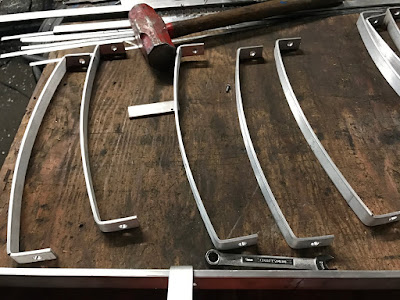Materials and hardware were purchased last week and dropped off to Kevin from the Manufacturing Team to construct the second solar panel rack. Half of the first rack was also borrowed to modeled off of to build the second. I will be responsible for the purchasing and fabricating the battery box to store charging components once wiring is sorted. The latest progress is pictured below.

In response to the low run time of batteries reported by Chris from the Controls Team, new batteries will be purchased. Battery selection began with analysis of the conditions and system the batteries will operate in. The motors on the pod cars have a maximum voltage input of 6 volts. The spacing within the cabins of podcars are limited to about a volume of approximately 16 square inches. After discussing with Eric, the budget for new batteries are limited approximately $100. Two different chemical composition of batteries were explored.
The first battery examined are a pair of 18650 lithium ion (Li-ion). In order to use this battery, each pod car would require a step-down voltage regulator. This additional component for each podcar increased cost significantly and minimized the amount of batteries that could be purchased with the remaining budget.
The other option is to purchase batteries similar to the 4 cell 4.8V nickel-metal hydride. For roughly $14 each, a 5 cell 6 V nickel-metal hydride battery pack can be purchased that has a nominal capacity of 2500 mAh. With a budget of $100, 7 batteries can be purchased that would be directly compatible with both the charging system and pod car system.


